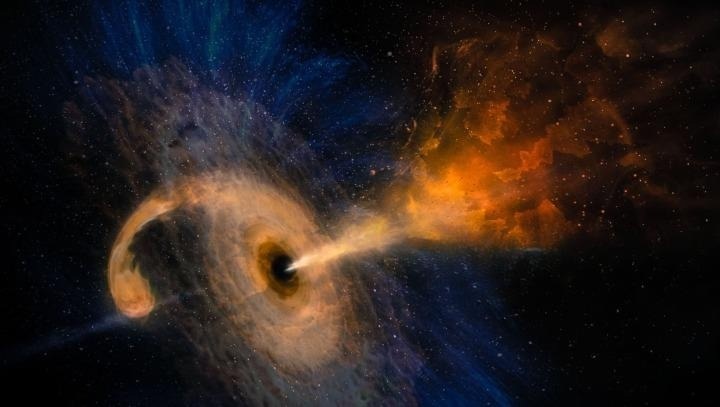Reviewed by Lexie CornerMar 18 2024
A recent study from the University of Ottawa challenges the prevailing model of the universe by proposing that it does not accommodate dark matter.

Image Credit: University of Ottawa
In cosmology, everything that does not interact with light or the electromagnetic field, or that can only be explained by gravity, is referred to as “dark matter.” Though humans cannot see it and are unsure of its composition, it provides insight into the behavior of galaxies, planets, and stars.
Rajendra Gupta, a Physics Professor in the Faculty of Science at uOttawa, reached this conclusion using a mixture of the covarying coupling constants (CCC) and “tired link” (TL) theories (the CCC+TL model).
This model combines two concepts: The premise that light loses energy when traveling large distances, and the idea that the forces of nature diminish over cosmic time. It has been put to the test and found to agree with a number of findings, including those on the distribution of galaxies and the evolution of light from the early cosmos.
The recent discovery challenges the widely accepted understanding of the universe, which suggests that approximately 27 % of it is comprised of dark matter, less than 5 % of ordinary matter, with the remainder being attributed to dark energy.
Challenging the Need for Dark Matter in the Universe
The study’s findings confirm that our previous work (“JWST early Universe observations and ΛCDM cosmology”) about the age of the universe being 26.7 billion years has allowed us to discover that the universe does not require dark matter to exist. In standard cosmology, the accelerated expansion of the universe is said to be caused by dark energy but is, in fact, due to the weakening forces of nature as it expands, not due to dark energy.
Rajendra Gupta, Professor, Physics, Faculty of Science, University of Ottawa
When light is shifted toward the red portion of the spectrum, it is referred to as “redshifts.” Data on the distribution of galaxies at low redshifts and the angular extent of the sound horizon at high redshifts were analyzed by the researcher from recent articles.
There are several papers that question the existence of dark matter, but mine is the first one, to my knowledge, that eliminates its cosmological existence while being consistent with key cosmological observations that we have had time to confirm.
Rajendra Gupta, Professor, Physics, Faculty of Science, University of Ottawa
This work opens new possibilities for investigating the fundamental features of the cosmos by casting doubt on the necessity of dark matter in the universe and presenting evidence in favor of a new cosmological model.
Journal Reference:
Gupta, R. P. (2024) Testing CCC+TL Cosmology with Observed Baryon Acoustic Oscillation Features. The Astrophysical Journal. doi.org/10.3847/1538-4357/ad1bc6